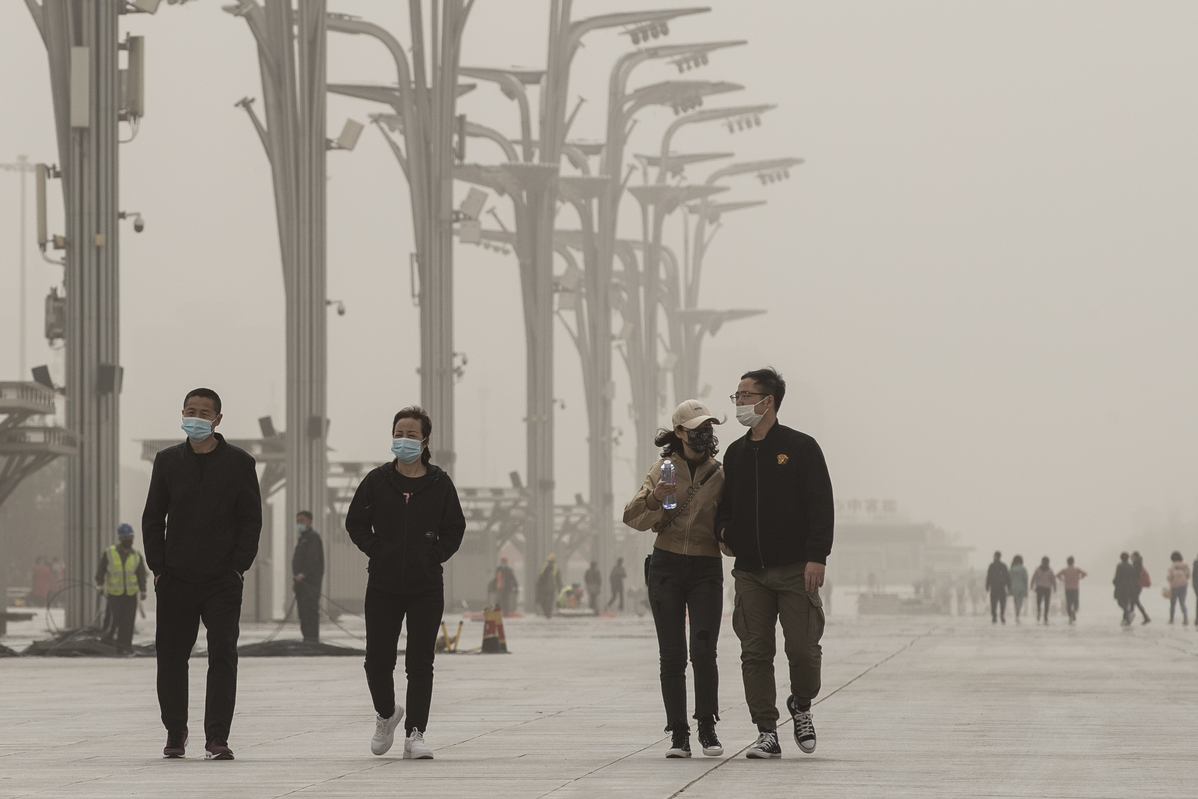Low rainfall causing severe weather, administration says


Sandy and dusty weather may continue to affect North and Northwest China and droughts will keep hitting South China due to less precipitation in May, the China Meteorological Administration said on Thursday.
The administration said from March 15 to Thursday, China experienced five bouts of sandstorms, the most severe and widespread in nine years.
"Higher temperatures and less rain than normal in Northwest China in May will retain the weather in northern areas. People will still need to keep paying attention to sand and dust," said Jia Xiaolong, deputy head of the National Climate Center, at a news conference on Thursday.
Jia said two key factors brought strong sandstorms to China: higher temperatures and less rain in Mongolia and Northwest China. This covered the ground with less snow and caused more sand to be blown into the air, and Mongolian cyclones, whirlwinds caused by low atmospheric pressure, moved fast to the east and provided momentum for sand transmission.
"Frequent occurrences of extreme weather events are warning us of climate change and the urgency of adaption to it," he said.
He said at least half the summers around the year 2024 will experience long heat waves and by the end of this century, the occurrence of heat in each summer may increase three times.
"That poses a threat to food safety, the aquatic ecosystem and human health globally. Adapting to climate change in a scientific and active manner is humanity's responsibility," he said.
Droughts will continue to hit South China in May, and Jia warned authorities to prepare for fights against drought.
"Winds from the northeast reduced sea water vapor transmission to southern parts and caused less rain there," Jia said.
Since autumn last year, 141 droughts hit counties of southern and eastern provinces including Yunnan, Hunan, Guangdong, Zhejiang and Jiangxi, the administration said.
For the coming Labor Day holiday from Saturday to Wednesday, temperatures in Central and East China, including Chongqing, Changsha in Hunan province, Wuhan in Hubei province and Nanchang in Jiangxi province will reach up to 34 C.
From Monday to Tuesday, northern provinces will have strong winds and sandy and dusty weather, with temperatures dropping by 4 to 6 C. Meanwhile, South China will be battered by heavy rain, especially in the Yangtze River basin region.
Xue Jianjun, deputy head with the National Meteorological Center, suggested tourists who will visit Gansu province, the Xinjiang Uygur and Inner Mongolia autonomous regions pay attention to safety on roads due to wind and sand.
"Try to avoid visiting areas expected to have rainstorms or those vulnerable to geological disasters," he said.
- Five trapped in flooding accident at Heilongjiang coal mine
- Long March 5 rocket deploys tech demo satellite into space
- China launches communication technology test satellite
- Spokesperson warns against aggression toward mainland fisherman
- Lhasa wetland reserve recognized as world's highest altitude wetland
- Chengdu woman sentenced for fatally stabbing neighbor




































